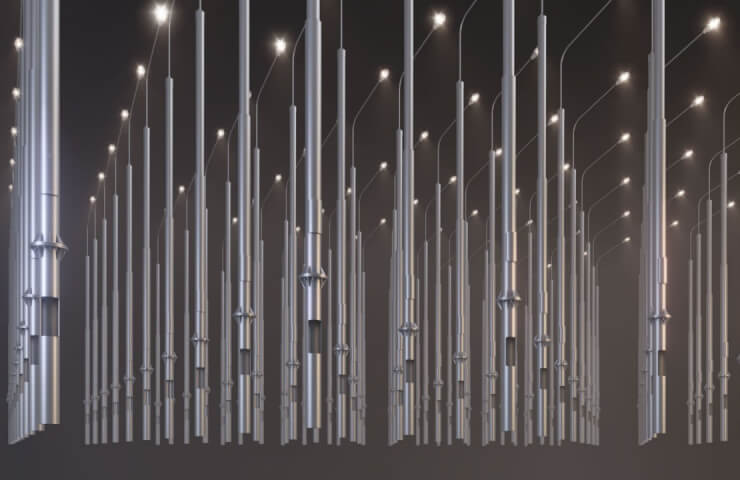Flanged supports: key features and benefits
In some cases, the installation of upright-type lighting poles is complicated or even impossible. Examples are overpasses, bridges, complex interchanges and other places. For such situations, supports were invented, consisting of two parts.
What's the difference
The upright type is an ordinary pole, before installation of which a pit breaks out. Taking into account the weight (together with the lantern) and the height of the support, as well as the characteristics of the soil, the depth is selected, usually not exceeding 2 meters. The column is placed, centered with the help of special spacers, after which the recess is poured with a concrete mixture. The concrete hardens, the spacers are removed.
Flanged type of lighting pole consists of two parts , is:
- "glass", embedded element;
- support with fasteners for bolts in its lower part.
Hence another order of work:
- A pit breaks out, into which a “glass” is laid with bolts already welded at the top.
- The element is centered, reinforced with concrete and firmly compacted.
- Installers wait for the concrete to harden, which takes about 5-6 days.
- The support is installed through the flange with holes directly on the bolts, the structure is fixed with nuts.
Most often, the flange (the area with the bolt holes) is round or square.
In this case, nothing prevents you from quickly replacing the support: the old post is quietly unscrewed and a new one is fastened, and the dismantling of the embedded element is far from always required. With the same success, the mast can be moved to another place!
Also, workers have the ability to adjust the tilt of the pole, for example, when the ground sags and the mast deviates from the vertical position.
What's the price
As for the cost when comparing the two types of support structures, there is no significant difference here, although other factors (valid for all types) that affect the price should be taken into account:
- support height, number of fixtures;
- mast shape;
- material;
- design (there are also decorative supports with a flange);
- cabling method.
There are three main types of mast shapes:
- round-conical supports, the most inexpensive on the market. A minimum of materials, hence the low weight;
- tubular poles are the most common type;
- faceted masts. The edges give additional rigidity, and the load is distributed throughout the structure. High price in exchange for durability.
In terms of material, composite lighting poles remain the most expensive, which is why they are produced in small quantities. They are corrosion resistant, lightweight, non-conductive (no need for grounding).
Interesting! During an accident, when a car crashes into an ordinary metal support, as a rule, the collision turns into sad consequences. A composite pole simply collapses with the same impact, which reduces the risk of death.
According to the laying of the cable, the structures are divided into non-power (cable underground) and power supports, which cost an order of magnitude more expensive.




